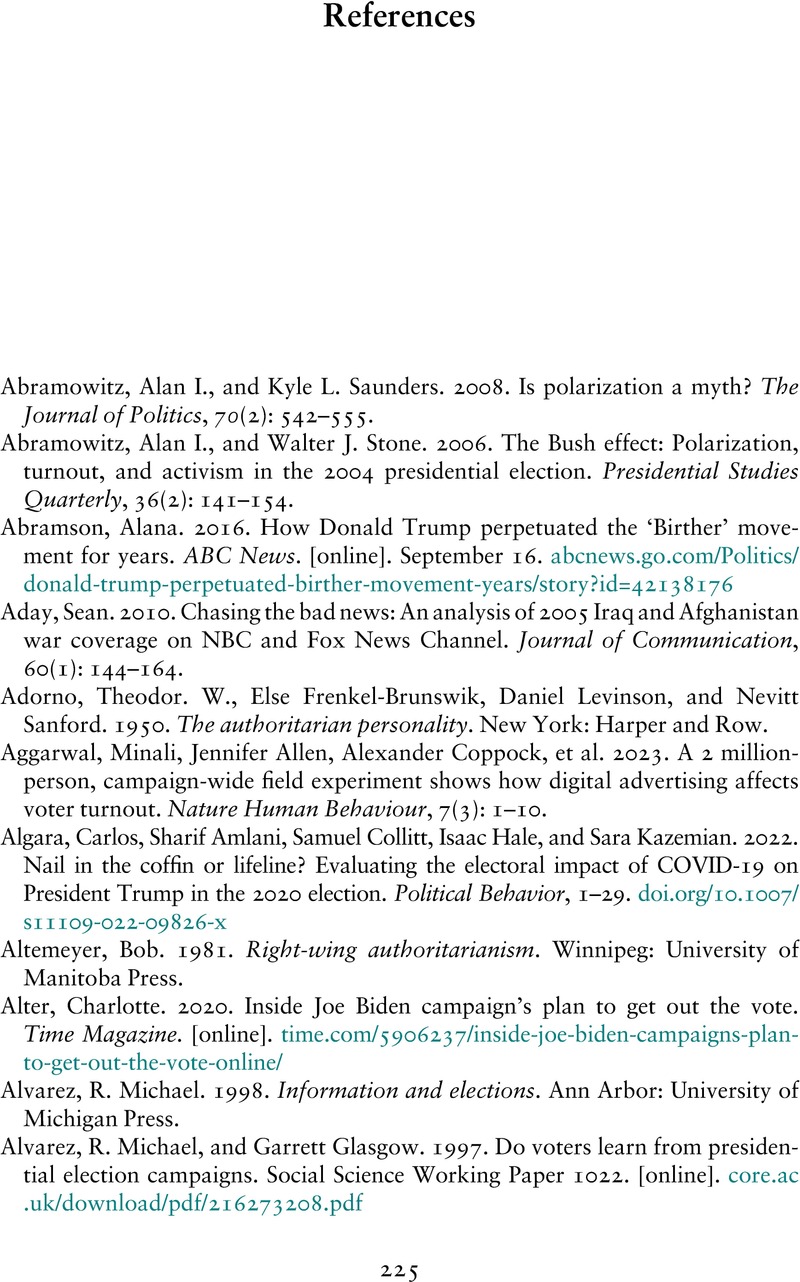Book contents
- Choices in a Chaotic Campaign
- Choices in a Chaotic Campaign
- Copyright page
- Dedication
- Contents
- Figures
- Tables
- Preface
- 1 Understanding How Campaigns Matter
- 2 “A Hot Mess inside a Dumpster Fire inside a Train Wreck”
- 3 The Priming of COVID-19 during the Campaign
- 4 Protests against Police Brutality
- 5 “A Rigged Election”
- 6 How the Campaign Shapes Voters’ Decisions about the Candidates
- 7 The Impact of Campaign Messages on the Decision to Vote
- 8 How Campaign 2020 Matters
- Appendix Survey Questionnaire
- References
- Index
- References
References
Published online by Cambridge University Press: 16 May 2024
- Choices in a Chaotic Campaign
- Choices in a Chaotic Campaign
- Copyright page
- Dedication
- Contents
- Figures
- Tables
- Preface
- 1 Understanding How Campaigns Matter
- 2 “A Hot Mess inside a Dumpster Fire inside a Train Wreck”
- 3 The Priming of COVID-19 during the Campaign
- 4 Protests against Police Brutality
- 5 “A Rigged Election”
- 6 How the Campaign Shapes Voters’ Decisions about the Candidates
- 7 The Impact of Campaign Messages on the Decision to Vote
- 8 How Campaign 2020 Matters
- Appendix Survey Questionnaire
- References
- Index
- References
Summary

- Type
- Chapter
- Information
- Choices in a Chaotic CampaignUnderstanding Citizens' Decisions in the 2020 Election, pp. 225 - 252Publisher: Cambridge University PressPrint publication year: 2024



